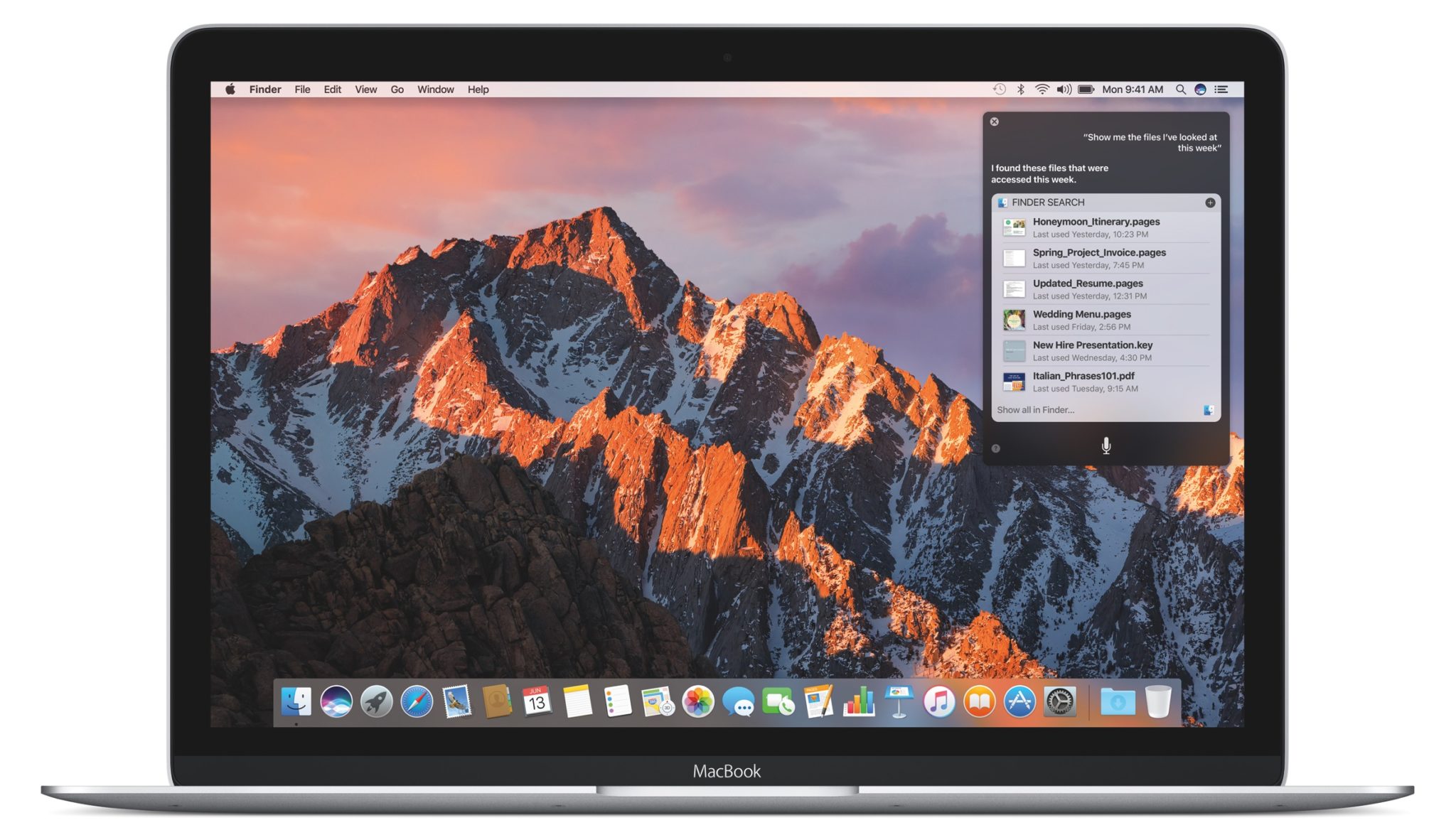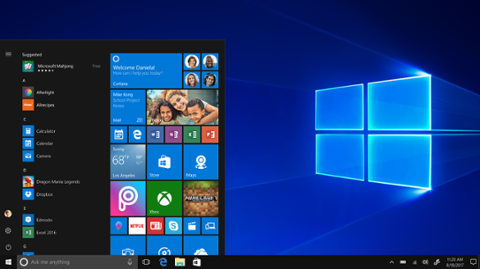
It seems MacBooks with ARM chipsets are in the offing, or at least being entertained as a possibility. A new dive into macOS code points to support for ARM-based architecture, which does not currently exist in any Apple desktop or laptop machine. Spotted by
Techtastic, the macOS kernel has a line noting support for an ‘ARM Hurricane’ SoC. Apple’s internal codename for ARM-based iPhone and iPad chipsets is very similar: the A7 was named ‘Cyclone,’ the A8 ‘Typhoon’ and the A9 ‘Twister.’ The evidence doesn’t stop with a note in the kernel, though. Apple seems to be investing in a method that would allow developers to support new ARM chipsets for the desktop without retrofitting apps. Instead of re-submitting the full binary for an existing app, developers would simply send Apple a bit code. That code would potentially allow Apple to ‘port’ the app for ARM, allowing it to run on the newest MacBooks without any issues.

Doubters will point out that ARM is traditionally less powerful than desktop architecture from Intel, but that seems to be changing. The latest iPhone 7 A10 Fusion chipset — which is ARM — is
more performant than the MacBook Air and 2013 Pro in benchmark tests. When it comes to software, Apple also has less reason to lean into Intel’s Core i-series.
Swift is catching on both as a language for third-party developers and internally at Apple, often reducing code overhang by one-third while giving native performance boosts. Similarly, Apple has been
making moves towards the cloud, offloading much of the heavy file lifting to the always-accessible iCloud Drive. There’s increasing convergence between Apple’s core desktop and mobile services, too. Apps such as Pages and Numbers have come a long way lately, adding collaborative features with macOS Sierra. Messages is similarly outfitted for both platforms, but offers a few extra bells and whistles for mobile (naturally). But as MacBooks get more portable and iPads get larger, the lines between those services naturally blur, as do the desktop and mobile environments. What remains to be seen is how professional apps like Xcode and Final Cut are able to process with ARM. I’ve never had a problem with Xcode on a MacBook with limited i-series processing power, but the Pro is always preferred. It’s possible Apple will also diversify its desktop chipset architecture. A more consumer-based Macbook, complimented by a very-much-for-professionals Pro option, isn’t out of the question. The bit code conversion theme fits that mold as well. Hopefully, we’ll know what (if anything) this all means very soon. Apple is expected to announce new computers later this month, and many are looking forward to a new MacBook Pro.
 It seems MacBooks with ARM chipsets are in the offing, or at least being entertained as a possibility. A new dive into macOS code points to support for ARM-based architecture, which does not currently exist in any Apple desktop or laptop machine. Spotted by Techtastic, the macOS kernel has a line noting support for an ‘ARM Hurricane’ SoC. Apple’s internal codename for ARM-based iPhone and iPad chipsets is very similar: the A7 was named ‘Cyclone,’ the A8 ‘Typhoon’ and the A9 ‘Twister.’ The evidence doesn’t stop with a note in the kernel, though. Apple seems to be investing in a method that would allow developers to support new ARM chipsets for the desktop without retrofitting apps. Instead of re-submitting the full binary for an existing app, developers would simply send Apple a bit code. That code would potentially allow Apple to ‘port’ the app for ARM, allowing it to run on the newest MacBooks without any issues.
It seems MacBooks with ARM chipsets are in the offing, or at least being entertained as a possibility. A new dive into macOS code points to support for ARM-based architecture, which does not currently exist in any Apple desktop or laptop machine. Spotted by Techtastic, the macOS kernel has a line noting support for an ‘ARM Hurricane’ SoC. Apple’s internal codename for ARM-based iPhone and iPad chipsets is very similar: the A7 was named ‘Cyclone,’ the A8 ‘Typhoon’ and the A9 ‘Twister.’ The evidence doesn’t stop with a note in the kernel, though. Apple seems to be investing in a method that would allow developers to support new ARM chipsets for the desktop without retrofitting apps. Instead of re-submitting the full binary for an existing app, developers would simply send Apple a bit code. That code would potentially allow Apple to ‘port’ the app for ARM, allowing it to run on the newest MacBooks without any issues.  Doubters will point out that ARM is traditionally less powerful than desktop architecture from Intel, but that seems to be changing. The latest iPhone 7 A10 Fusion chipset — which is ARM — is more performant than the MacBook Air and 2013 Pro in benchmark tests. When it comes to software, Apple also has less reason to lean into Intel’s Core i-series. Swift is catching on both as a language for third-party developers and internally at Apple, often reducing code overhang by one-third while giving native performance boosts. Similarly, Apple has been making moves towards the cloud, offloading much of the heavy file lifting to the always-accessible iCloud Drive. There’s increasing convergence between Apple’s core desktop and mobile services, too. Apps such as Pages and Numbers have come a long way lately, adding collaborative features with macOS Sierra. Messages is similarly outfitted for both platforms, but offers a few extra bells and whistles for mobile (naturally). But as MacBooks get more portable and iPads get larger, the lines between those services naturally blur, as do the desktop and mobile environments. What remains to be seen is how professional apps like Xcode and Final Cut are able to process with ARM. I’ve never had a problem with Xcode on a MacBook with limited i-series processing power, but the Pro is always preferred. It’s possible Apple will also diversify its desktop chipset architecture. A more consumer-based Macbook, complimented by a very-much-for-professionals Pro option, isn’t out of the question. The bit code conversion theme fits that mold as well. Hopefully, we’ll know what (if anything) this all means very soon. Apple is expected to announce new computers later this month, and many are looking forward to a new MacBook Pro.
Doubters will point out that ARM is traditionally less powerful than desktop architecture from Intel, but that seems to be changing. The latest iPhone 7 A10 Fusion chipset — which is ARM — is more performant than the MacBook Air and 2013 Pro in benchmark tests. When it comes to software, Apple also has less reason to lean into Intel’s Core i-series. Swift is catching on both as a language for third-party developers and internally at Apple, often reducing code overhang by one-third while giving native performance boosts. Similarly, Apple has been making moves towards the cloud, offloading much of the heavy file lifting to the always-accessible iCloud Drive. There’s increasing convergence between Apple’s core desktop and mobile services, too. Apps such as Pages and Numbers have come a long way lately, adding collaborative features with macOS Sierra. Messages is similarly outfitted for both platforms, but offers a few extra bells and whistles for mobile (naturally). But as MacBooks get more portable and iPads get larger, the lines between those services naturally blur, as do the desktop and mobile environments. What remains to be seen is how professional apps like Xcode and Final Cut are able to process with ARM. I’ve never had a problem with Xcode on a MacBook with limited i-series processing power, but the Pro is always preferred. It’s possible Apple will also diversify its desktop chipset architecture. A more consumer-based Macbook, complimented by a very-much-for-professionals Pro option, isn’t out of the question. The bit code conversion theme fits that mold as well. Hopefully, we’ll know what (if anything) this all means very soon. Apple is expected to announce new computers later this month, and many are looking forward to a new MacBook Pro. 
